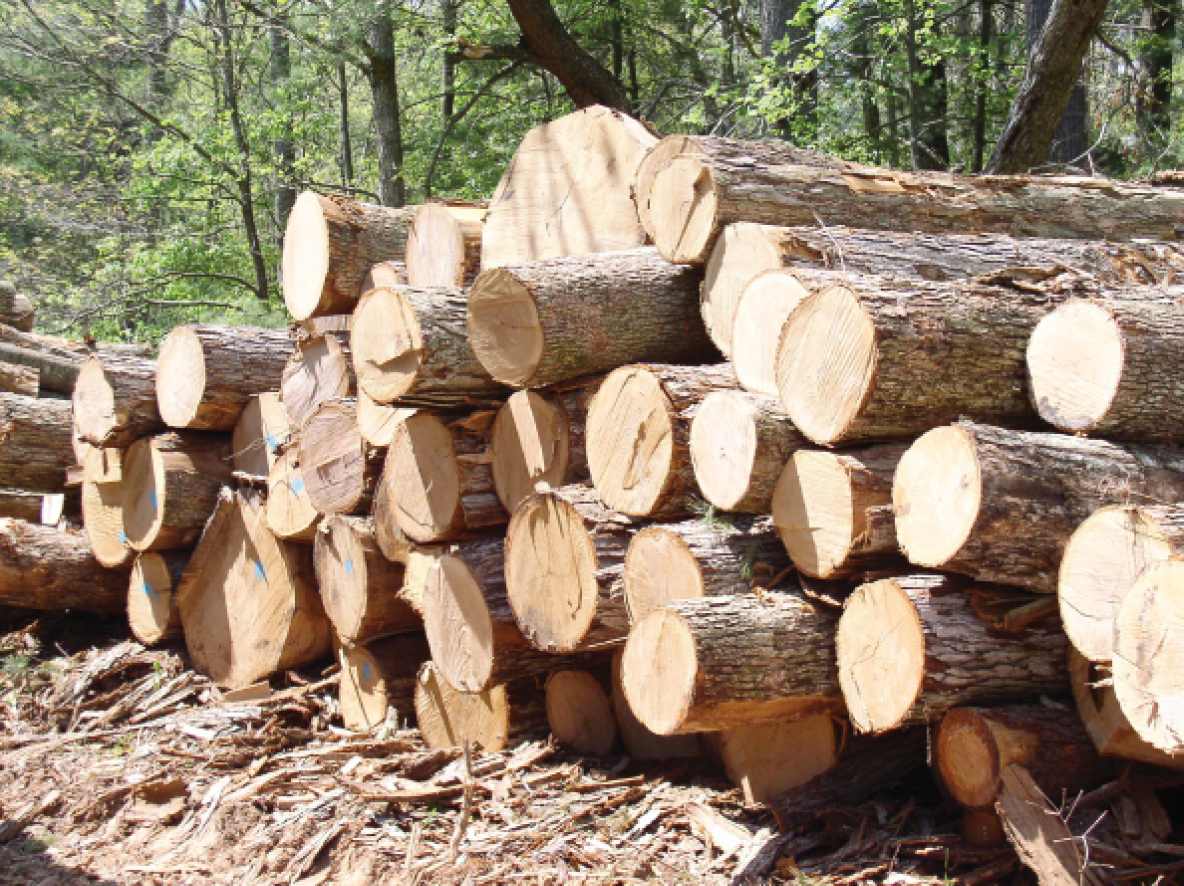Why economic wood species are disappearing from our forests
It is threatening furniture industries – RMRDC Unsustainable timber harvesting has been identified as the major threat to sustainable supply of timber in the country. A document obtained from the Raw Material Research and Development Council (RMRDC) shows that as at today, the total forest area, which stood at 10 per cent of the country’s […]

Commercial woods are fast disappearing in our forests
- It is threatening furniture industries – RMRDC
Unsustainable timber harvesting has been identified as the major threat to sustainable supply of timber in the country. A document obtained from the Raw Material Research and Development Council (RMRDC) shows that as at today, the total forest area, which stood at 10 per cent of the country’s land area in 1996, is less than 5 per cent.
According to the document, an estimated 26,000ha of forest land is destroyed annually in the rainforest zone, while over 350,000ha of forest and natural vegetation is lost. These, according to some experts, have led to the disappearance of most of the economic wood species in the forests.
One of the experts, Sunday Ayodele, believes that wooden furniture industries in Nigeria rely mostly on timber from government forest reserves and forests outside reserves (free areas). He, however, noted that high quality timber supplies from plantations were limited.
The director-general of the RMRDC, Professor Ibrahim Hussaini Doko frowned at the way a specific wood specie, rosewood (Pterocarpuserinaceus), a tropical hardwood known for its durability, good aesthetic value and machinability properties, had come under serious onslaught of Chinese traders in all ecological zones in Nigeria.
“The traders are moving from one country in West Africa to another in search of rosewood. In 2014, more than 30,000 Chinese companies traded in rosewood products, generating domestic retail resources of over $25 billion,” he said.
According to him, currently in Nigeria, the timber merchants are moving from one state to another, depleting rosewood trees and leaving blighted and raped landscapes.
“In 2015, Nigeria was the largest exporter of rosewood, accounting for 45 per cent of the total export to China. This has contributed to the scarcity of economic wood species to the industrial sector,’’ he said.
A forest expert, Mr. Emmanuel Irabor, observed that low availability of economic wood species make importation of cream wood by major furniture companies necessary as they have to remain competitive.
Although a number of industries are now using lesser known species, the export market for such wood products is not guaranteed as most international buyers may not be familiar with the species, he added.
Furniture export can increase foreign exchange earnings
According to the RMRDC boss, in 2017, the global furniture market was valued at USD 331.21 billion and is expected to reach approximately USD 472.30 billion by 2024, growing at a compound annual rate (CAGR) of around 5.2 per cent between 2018 and 2024.
Professor Doko said wooden furniture parts and components were now being manufactured and exported by a few large companies in Nigeria. He added that between 2015 and 2018, Nigeria exported furniture and furniture components estimated at 200 million dollars.
He, however, said this was very low compared to the comparative advantage we have internationally. He regretted that many of the industries suffer from high cost of production due to energy cost and poor infrastructure.
Also, the increasing cost of importing major raw materials is a major problem as most wood industries in Nigeria have collapsed.
Experts suggest way forward
Experts and various studies have shown that one of the best ways out is to recognise the importance of economic wood species to the sustainability of the furniture industry.
Professor Doko said his council had since commenced a programme called Establishment of Plantation of Economic Indigenous Wood Species.
“Through the programme, which is being executed in collaboration with the Forestry Research Institute of Nigeria, Ibadan and the Forestry Departments in various universities, an example of which is the Usmanu Danfodio University, Sokoto, the council was able to raise improved seedlings of economic wood species, which we normally give to interested farmers that have at least five hectares of land for plantation establishment.
“Since then, we have been able to produce seedlings of various wood species, such as Khayaivorensis, etc, which have been planted in various parts of the country,’’ he said.
He said the council, in recognition of the importance of drying wood optimally to eight per cent moisture content during processing to increase products shelf life, designed and fabricated wood seasoning kilns in collaboration with Palcon Nigeria Limited, a private sector company based in Enugu, Enugu State.
“Two types of wood seasoning kilns were produced. The first uses electricity as a source of energy while the other uses wood wastes. The kilns are being calibrated prior to deployment to furniture clusters in various parts of Nigeria,’’ he added.
He said the council realised the need to boost availability of economic wood species locally and came up with the need to deploy bamboo for use as alternative raw material for furniture production.
“Due to this, a comprehensive survey was carried out by a multi-disciplinary task force constituted by the council to outline areas where bamboo grows in sustainable quantities in Nigeria and the current utilisation patterns.
“The study indicated that bamboo grows in 23 states of the federation. Thus, the RMRDC is collaborating with different private sector organisations to promote industrial use of bamboo locally,’’ he said.
According to forest expert Irabor, bamboo is being used to produce floor tiles in parts of Edo and Delta states, as well as furniture items in parts of the South-West.
